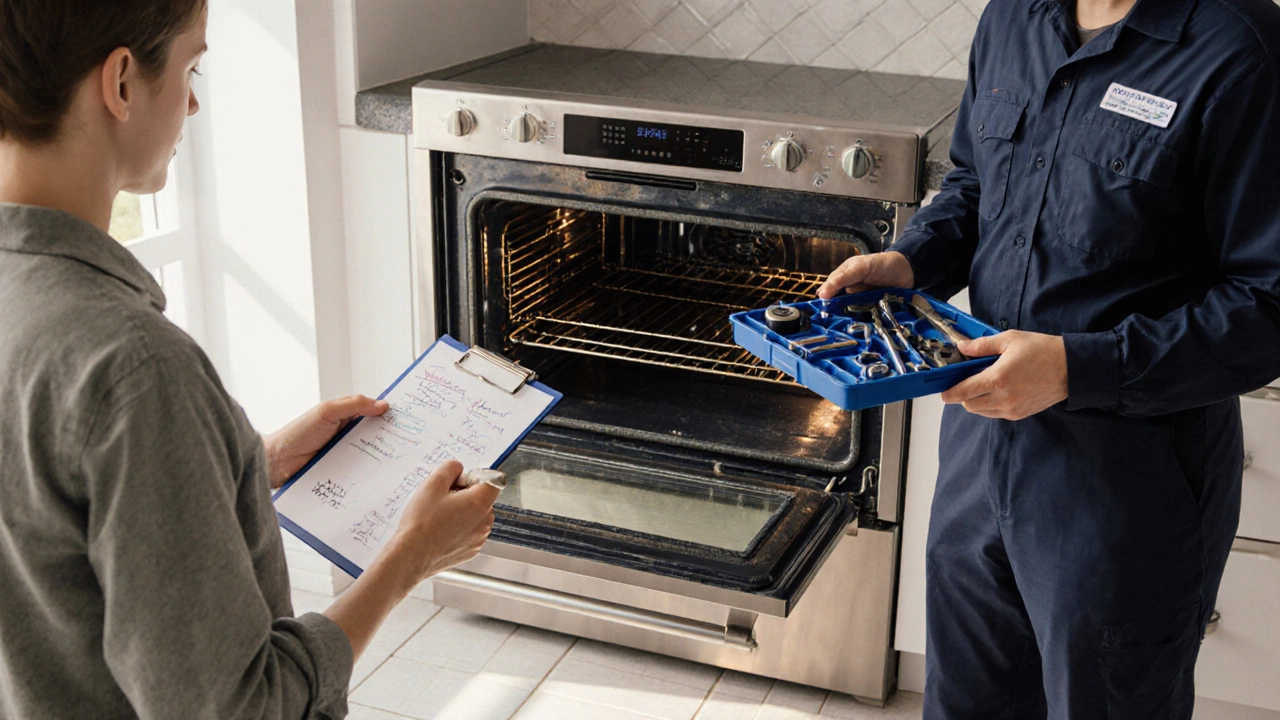Oven Replacement Cost: What You Need to Know Before You Decide
When thinking about oven replacement cost, the total amount you’ll spend to swap out a faulty oven, including parts, labour and removal. Also known as oven swap expense, it becomes clearer when you compare it to electric oven repair, fixing a broken electric oven instead of buying a new one and the condition of key components like the oven control board, the electronic brain that manages temperature and timing. Understanding these pieces helps you answer the big question: is it cheaper to fix or to replace?
Key Factors That Shape the Replacement Price
First, the type of oven matters. A standard electric model usually costs less than a built‑in or dual‑fuel version. Next, the oven heating element, the part that actually generates heat can be a major cost driver if it needs a full upgrade rather than a simple swap. Labour rates in Glastonbury typically run between £50‑£80 per hour, and a professional will need 1‑2 hours for removal, disposal and installation. Finally, waste‑removal fees add a small but unavoidable charge; most recycling centres levy around £20‑£30 for large appliances.
When you put these pieces together, a simple calculation emerges: oven replacement cost = part price + labour + disposal fee. For example, a mid‑range 70‑litre electric oven might have a chassis price of £350‑£500, labour of £100‑£160, and disposal at £25, bringing the total to roughly £475‑£685. Compare that to a typical repair that replaces only the heating element (£30‑£50) or the control board (£80‑£120) plus labour (£60‑£100). The numbers show why many homeowners opt to repair a unit that’s less than five years old, while older models often tip the scales toward replacement.
Another angle is energy efficiency. New ovens meet stricter standards and can shave a few pounds off your electricity bill each year. If your current oven is over ten years old, the long‑term savings might offset the upfront replacement price. Conversely, a brand‑new appliance with a faulty control board can become a money pit, especially if the warranty has expired.
So, what should you do? Start with a quick visual inspection: look for obvious damage to the heating element, check if the control board shows burnt spots, and listen for unusual noises. If you spot a single fault, a targeted repair is often the most cost‑effective route. If multiple components are failing, or the oven is showing age‑related wear, factor in the total oven replacement cost and weigh it against the repair estimate. Our collection of guides below walks you through diagnosing common faults, estimating realistic repair prices, and deciding when a brand‑new oven makes sense for your kitchen.
Ready to dive deeper? Below you’ll find practical articles that break down repair costs, explain how to test a control board, and give tips on budgeting for a new oven. Whether you’re budgeting for a fix or a full swap, the right information can save you both time and money.

Oven Repair vs Replacement: Which Is Cheaper?
Find out whether fixing your oven or buying a new one saves you more money. Get cost breakdowns, decision tips, and a handy repair vs replace comparison.